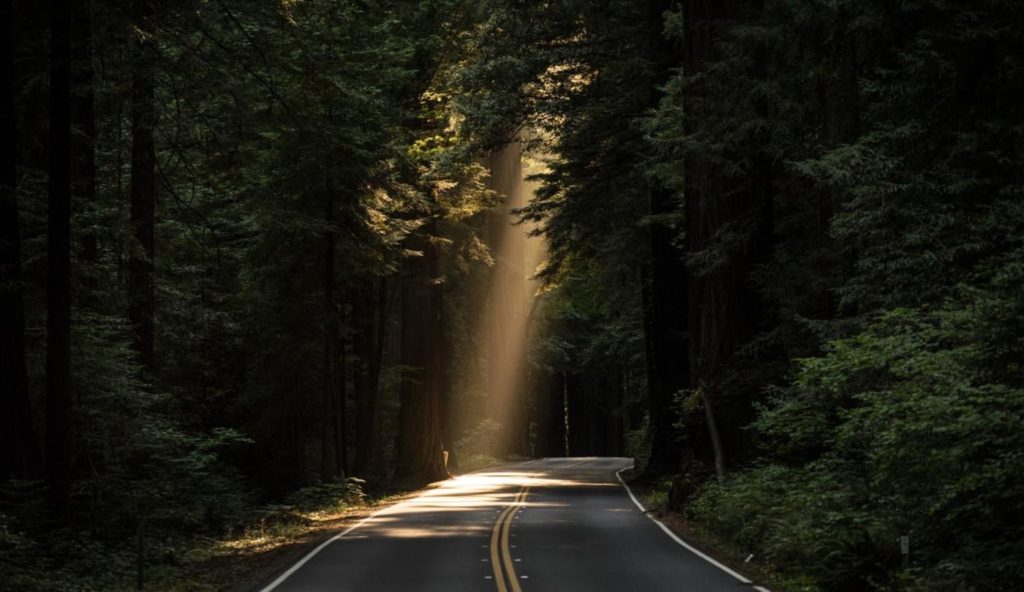Recently updated on March 4th, 2025 at 12:00 pm
Since the spread of coronavirus began in January, we’ve seen a ripple effect take place across the world, changing much of what we once took for granted. From work, to travel, to how we interact with others; our daily habits have evolved as government imposed lockdowns have kept many of us at home for weeks.
Yet as infection rates slow across the world, some countries are beginning to lift their coronavirus lockdowns. With summer approaching fast, more holiday-makers around the world will be wondering where to travel after coronavirus and if it will be safe. Read on for a glimpse of what the new ‘normal’ is like in countries with no quarantine and why we should remain hopeful for the future.


Austria
As Austria borders Northern Italy, one of the first and most heavily affected regions in the world, their response to the pandemic was quick in comparison to other European countries.
After a suspected coronavirus hotspot emerged in Tyrol, a skier’s paradise in the Austrian Alps, the government initially closed the region off. Just a few days later, lockdown efforts began at a national scale on March 16.
Nearly two months on, early precaution seems to have paid off. Lockdown measures were lifted gradually, with DIY stores and garden centres allowing customers in mid-April.
Austrian Labour Day on May 1 brought with it a new sense of freedom, as Austrians were allowed to leave their homes without any restrictions and malls, hairdressers and high streets reopened to the public. Restaurants, bars and cafes are set to follow suit from May 15.
Can I travel to Austria?
Whilst most travel into Austria is still prohibited until further notice, people travelling from countries within Europe’s Schengen Area may currently be allowed entry, albeit with restrictive measures.
Those travelling from bordering countries (Germany, Hungary, Switzerland, Italy and Slovenia), or other areas with a travel warning in place, must provide a medical certificate with micro-biological testing results. These tests must be no more than 4 days old upon entry.
As hotels in Austria are set to re-open on May 29, ministers have advised owners to only rent rooms to travellers from neighbouring countries where the coronavirus infection rate is low.
Czech Republic
It was just before midnight, March 15 when Czech Republic’s prime minister declared a national emergency due to the coronavirus – the first time in the country’s modern history such an announcement had been made.
But this wouldn’t have come out of the blue for Czechs. The country had been pre-emptively testing people for the virus all the way back in January and later, were the first in the EU to introduce mandatory face-masks.
Now, DIY shops, farmers markets, bicycle stores and other small businesses have been allowed to open and citizens can go outside for non-essential reasons, as long as they follow social distancing rules. Restaurants and bars with outdoor seating will also re-open May 25, as part of a five-stage COVID exit plan that began in mid-April.
Can I travel to the Czech Republic?
From May 11, the ban on international travel via bus or train will be lifted in the Czech Republic, meaning travellers from most EU countries will be permitted entry. Seasonal, health or social workers from other countries in the world are also allowed to travel into the country. In both cases, evidence of a negative COVID-19 test is required.
Whilst the country still remains on national emergency status, the Czech Republic are also opening hotels earlier than planned, from May 25.


New Zealand
Coronavirus testing measures began back in January for New Zealand, but it wasn’t till February 28 that a patient had to undertake three separate medical exams to finally test positive for coronavirus.
New Zealanders had previously tested positive in other countries, including Wuhan in China, where the virus is widely believed to have originated. Government chartered flights were scheduled to bring New Zealand citizens home, whilst borders closed and a national coronavirus lockdown began in mid-March.
Since then, the country has been praised internationally for success in lowering infection rates and lockdown measures were lifted on 27 April, with some precautions still in place.
On May 1, New Zealand reported the first day of zero new coronavirus cases since the lockdown began and only 20 deaths related to coronavirus have occurred in the country.
Can I travel to New Zealand?
Whilst New Zealand is currently closed to almost all travellers, there have been cross-table discussions with Australia on a potential ‘Trans-Tasman travel bubble’.
Whilst the details of such an arrangement are yet to be clarified, it is likely this move would allow unrestricted movement across borders for Australians and New Zealanders in the coming weeks. For many, this will be good news in an otherwise difficult period. Ski-season in New Zealand is approaching in June and many jobs are potentially at stake.
With thousands of New Zealanders and Australians living on their near-neighbour’s soil, this also means that many more families may be reunited with loved ones.
China
It was Dr Zhang Jixan who first raised the alarm about a new infectious disease, after noticing unusual signs upon routine check-ups with patients who had visited the Huanan Seafood Market.
The doctor, who fought SARS in 2003, was widely praised for her quick thinking in the situation, organising protective gear and a specialised area in the hospital for new patients soon after her realisation.
After Wuhan and all other cities in China’s Hubei province were quarantined by January 29, Chinese New Year celebrations were cancelled, cars were banned from roads and the country was largely put on hold to deal with containing the virus.
Now more than three months on, new cases of coronavirus have almost come to a halt in China and lockdown measures have relaxed, but not completely. Wearing face masks is commonplace and whilst people have gone back to work, temperatures are checked and social distancing measures observed in most public places.
It was met with great cheer when Chinese authorities recently re-opened sections of the Great Wall to citizens once again. The Badaling section of the UNESCO site is open to visitors between 9am to 4pm. There has also been talk of a new 2.5 day weekend to ‘stimulate economic activity’ and help businesses recover after the crisis.
Can I travel to China?
The domestic travel ban has just been lifted in time for the Chinese Labour Day holidays and families from Wuhan and other Chinese cities can travel freely across the country for their break.
However, all but essential travel into China is still strongly advised against by the FCO.
Whilst new coronavirus cases have dropped to around 2 per day, it might not be too long before travel to China resumes.


Denmark
There had been less than 1,000 coronavirus cases in Denmark when Prime Minister Mette Frederiksen called for a national lockdown on March 13 – the second European country to do so, after Italy.
As has been seen in other countries, these measures proved worthwhile, as nurseries, kindergartens and primary schools were allowed to re-open less than a month later. Whilst some were pleased, it was reported many Danish parents refused to bring their children back to school upon the news, fearing the lockdown had been lifted too early. Further relaxation of lockdown restrictions are due on May 10, which may see the reopening of restaurants, shops and hairdressers.
Can I travel to Denmark?
Until 10 May, tourists and travellers ‘without worthy purpose’ will be refused entry past the Danish border.
Whilst it is a little unclear what purpose would be ‘worthy’ enough to convince officials, it’s been stated that foreign nationals who live and work in Denmark on a temporary or permanent basis are allowed to enter the country.
This is also true for those who need to travel through Denmark to reach their place of residence, or those who are providing a service or delivering goods to the country.


While there is still some way to go, the success of these countries lifting their coronavirus lockdowns will likely influence the rest of the world as they navigate a post-COVID future.
What are your thoughts on travel in 2020? Let us know in the comments below.
RELATED CONTENT:
17 national parks you can take virtual tours to
7 ways to reduce your environmental impact when you travel with Trafalgar
How time travel can cure your wanderlust